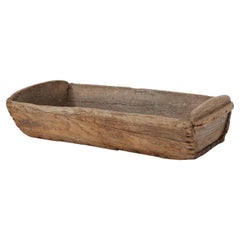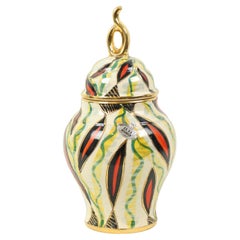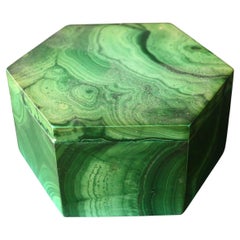Belgium - Decorative Objects
19th Century French Rustic Antique Belgium - Decorative Objects
Wood
Late 19th Century European Gothic Antique Belgium - Decorative Objects
Bronze, Brass
Mid-20th Century Belgian Belgium - Decorative Objects
Ceramic
20th Century European Art Deco Belgium - Decorative Objects
Marble, Bronze
2010s Belgian Post-Modern Belgium - Decorative Objects
Clay
1920s Congolese Art Deco Vintage Belgium - Decorative Objects
Malachite
1920s Belgian Art Nouveau Vintage Belgium - Decorative Objects
Ceramic
19th Century Italian Neoclassical Antique Belgium - Decorative Objects
Wood, Plaster
20th Century Belgium - Decorative Objects
Iron
20th Century Kenyan Mid-Century Modern Belgium - Decorative Objects
Malachite, Marble
20th Century Kinetic Belgium - Decorative Objects
Wood
Mid-20th Century Italian Mid-Century Modern Belgium - Decorative Objects
Art Glass, Blown Glass
Mid-20th Century German Mid-Century Modern Belgium - Decorative Objects
Ceramic
1920s German Art Nouveau Vintage Belgium - Decorative Objects
Majolica
2010s Belgian Post-Modern Belgium - Decorative Objects
Oak
Mid-20th Century Italian Mid-Century Modern Belgium - Decorative Objects
Art Glass, Blown Glass
Mid-20th Century Japanese Japonisme Belgium - Decorative Objects
Ceramic
Early 19th Century Swedish Folk Art Antique Belgium - Decorative Objects
Birch, Pine
16th Century Italian Renaissance Antique Belgium - Decorative Objects
Copper, Enamel
1980s French Post-Modern Vintage Belgium - Decorative Objects
Bronze
1920s Swedish Scandinavian Modern Vintage Belgium - Decorative Objects
Birch
1930s French Art Deco Vintage Belgium - Decorative Objects
Marble, Metal
1920s French Art Deco Vintage Belgium - Decorative Objects
Marble, Bronze
1960s German Mid-Century Modern Vintage Belgium - Decorative Objects
Ceramic
1860s French Napoleon III Antique Belgium - Decorative Objects
Enamel, Gold, Gold Plate, Bronze
1950s Belgian Mid-Century Modern Vintage Belgium - Decorative Objects
Crystal
1960s German Vintage Belgium - Decorative Objects
Ceramic
Mid-20th Century Italian Mid-Century Modern Belgium - Decorative Objects
Murano Glass
Mid-20th Century Italian Mid-Century Modern Belgium - Decorative Objects
Terracotta
1930s French Art Deco Vintage Belgium - Decorative Objects
Marble, Bronze
Late 19th Century French Late Victorian Antique Belgium - Decorative Objects
Metal, Gold Plate, Other
1930s French Art Deco Vintage Belgium - Decorative Objects
Enamel
2010s Belgian Post-Modern Belgium - Decorative Objects
Stone
1970s Belgian Baroque Vintage Belgium - Decorative Objects
Pine
Early 20th Century Belgian Art Deco Belgium - Decorative Objects
Glass, Art Glass
Early 20th Century European Art Deco Belgium - Decorative Objects
Glass
Mid-20th Century European Mid-Century Modern Belgium - Decorative Objects
Brass
Early 20th Century Dutch Art Deco Belgium - Decorative Objects
Copper
1920s French Art Deco Vintage Belgium - Decorative Objects
Onyx, Belgian Black Marble, Bronze
Early 20th Century Art Deco Belgium - Decorative Objects
Copper
Early 20th Century Papua New Guinean Belgium - Decorative Objects
Shell, Wood
1950s Italian Mid-Century Modern Vintage Belgium - Decorative Objects
Porcelain
1960s Belgian Vintage Belgium - Decorative Objects
Crystal
Early 20th Century German Art Deco Belgium - Decorative Objects
Art Glass
1930s French Industrial Vintage Belgium - Decorative Objects
Brass
1920s Indian Vintage Belgium - Decorative Objects
Silver Plate
1990s Belgium - Decorative Objects
Resin
Mid-20th Century Swedish Scandinavian Modern Belgium - Decorative Objects
Art Glass
15th Century and Earlier Afghan Archaistic Antique Belgium - Decorative Objects
Alabaster
20th Century Dutch Baroque Revival Belgium - Decorative Objects
Earthenware, Delft
1950s Belgian Mid-Century Modern Vintage Belgium - Decorative Objects
Crystal
20th Century Belgium - Decorative Objects
Brass
Mid-20th Century European Mid-Century Modern Belgium - Decorative Objects
Metal
Early 20th Century European Art Deco Belgium - Decorative Objects
Wood
15th Century and Earlier American Antique Belgium - Decorative Objects
Stone
Early 19th Century Swiss Early Victorian Antique Belgium - Decorative Objects
Bronze, Steel, Cut Steel, Other, Iron
20th Century German Mid-Century Modern Belgium - Decorative Objects
Glass
1960s German Vintage Belgium - Decorative Objects
Crystal
Early 20th Century Dutch Modern Belgium - Decorative Objects
Art Glass
1950s French Mid-Century Modern Vintage Belgium - Decorative Objects
Ceramic, Earthenware
Read More
How a Craving for Color Revolutionized Glass
After synthetic dyes changed fashion, home goods and printed matter, it was only a matter of time till glass caught up.
Kazuyo Sejima’s Flowering Tree Blooms Year-Round
The brilliantly simple design turns a modest bouquet into a major statement.
He Wrote ‘Oedipus Rex,’ but Do You Know What He Looked Like?
The Greek tragedian is said to have been handsome in his day.
Cigar Culture Was Once the Peak of Masculinity. Now, It’s a Compelling Curiosity
Even for those who don’t indulge, elegant smoking accessories and audacious art portraying cigar enthusiasts hold a nostalgic allure.
African Travel Plans on Hold? This Ardmore Leopard Vase Brings the Beauty of the Savanna to You
It’s an excellent example of the sought-after ceramics coming out of South Africa’s KwaZulu-Natal province.
With a High-Tech Flagship and Cool Collabs, Lladró Is Breaking the Mold for Porcelain Production
Thanks to its new leadership, the Spanish maker of figurines, busts and lighting is on a mission to update the art of porcelain for the 21st century.
Zoë Powell’s Magnolia 05 Vessel Is Handmade from Clay She Unearthed Herself
The free-form stoneware piece is inspired by the magnolia tree and its associations with home.
8 Ways to Breathe New Life into a Space with Plants
The pair behind the Instagram account @houseplantclub share their tips for making any room of the house gloriously green.





